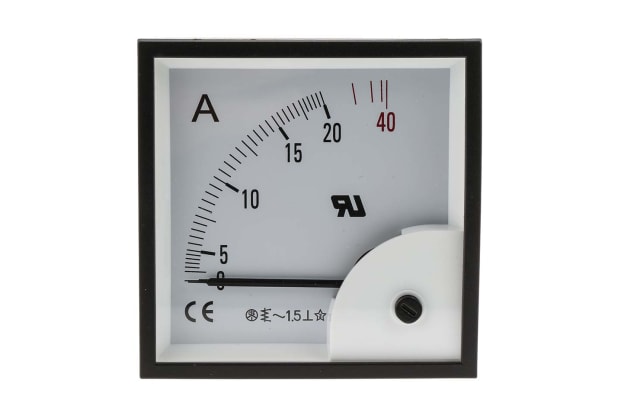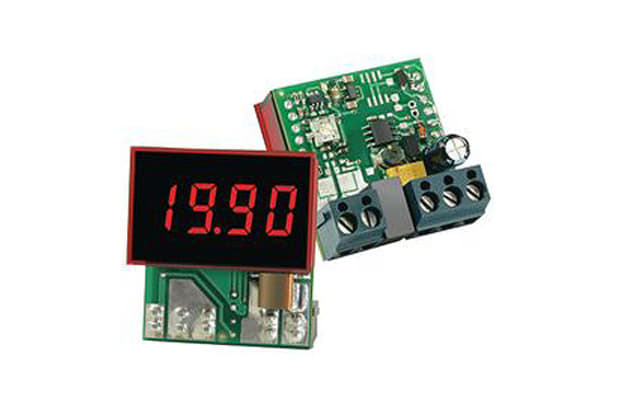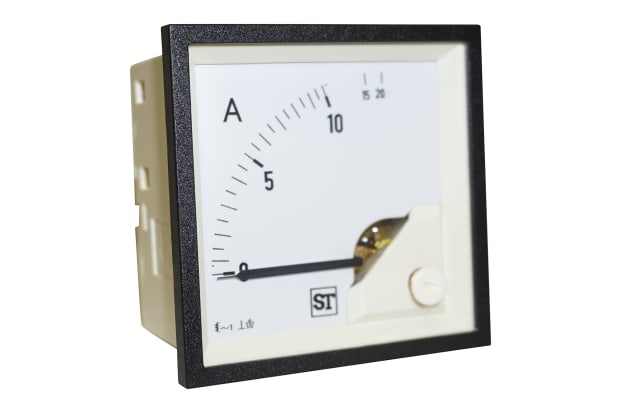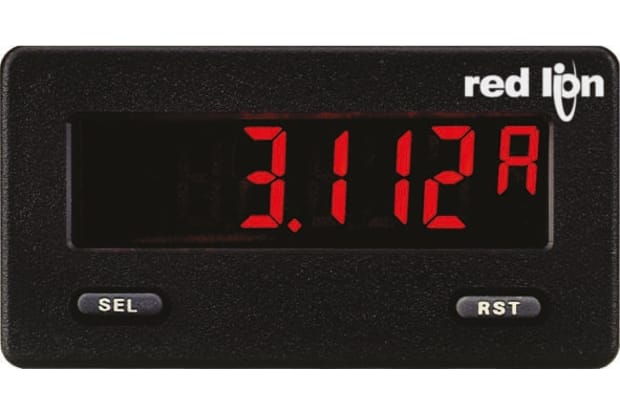- Published 30 Jan 2023
- Last Modified 29 Aug 2023
- 6 min
A Complete Guide to Ammeters
Discover everything you need to know about ammeters, how to use them, and the different types available.

What is an Ammeter?
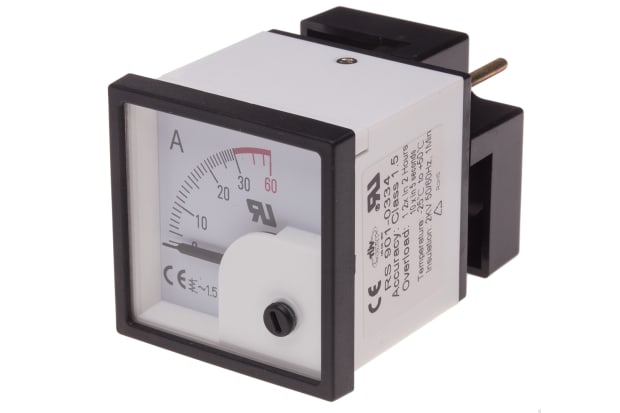
The name ‘ammeter’ is an abbreviation of ‘ampere meter’. An ampere, or more familiarly, ‘amp’, is the fundamental unit of active electric current. So, just what is an ammeter?
It clearly follows that the function of an ammeter is to measure that current within an electrical circuit. Ammeters measure current in two metrics - ‘draw’, the flow of current in a particular circuit, and ‘continuity’, the steadiness of the current and the presence or absence of interruptions.
Ammeters are used to detect problems in electrical circuits - unusually high or low levels of current, for example. The former can indicate malfunctioning components for a short circuit, while the latter can be a sign of disruptive interruptions or unusual electrical impedance. It is routine to check sockets or outlets using an ammeter when conducting repairs or changing a fuse.
Ammeters are not to be confused with voltmeters, which measure the voltage in a circuit. Voltage, also known as ‘electrical tension’, is the difference in electrical potential between two points in a circuit and therefore the amount of force required to move charge between them.
Types of Ammeter
Like other electrical instruments and components, ammeters are available in a variety of designs. The following are some of the most commonly encountered types:
Analogue Ammeters
Analogue ammeters - also known as analogue panel ammeters - display their readings on an analogue dial with the help of a pointer.
There are three principal types of analogue ammeter. These are as follows:

Moving Iron Ammeters
These models feature an iron needle attached to a vane which moves in response to the electromagnetic force generated by a coil surrounding a second vane within the device. They respond to both alternating (AC) and direct currents (DC). Moving iron ammeters are widely used within industry to measure AC circuits.
Moving Coil Ammeters
These feature a coil which moves in response to the magnetic fields generated by direct current. They cannot function directly with AC.
Moving Magnet Ammeters
These models work in a similar way to the moving coil design, but the electrical coil is located within the meter case and a permanent magnet moves the needle in the dial. They are relatively high capacity, carrying and measuring significantly stronger currents than moving coil models.
Additional types of analogue ammeter that you may encounter include:
Electrodynamic Ammeters
A type of ammeter in which an electrodynamic magnet (one sensitive to the flow of electrical current) responds to alternating and direct sources.
Hot Wire Ammeters
These use a thermally sensitive wire which expands when it gets hot to display amp levels in a particular circuit.
Milliammeters and Microammeters
These instruments are designed for very low voltage currents measured in milliamperes (one-thousandth of an ampere) and microamperes (one-millionth of an ampere).
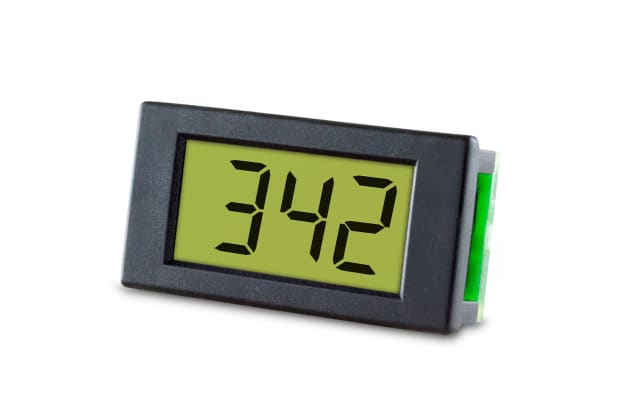
Digital Ammeters
Digital ammeters are also known as digital panel ammeters, and as the name indicates, they make use of digital panels to display their reading. This means that they are well suited for use in low light environments. They are a popular choice within factories and similar industrial environments.
Typically, digital ammeters are designed for installation on larger control panels and they are usually programmable. This means that different colours, alarms or messages can be displayed in varying circumstances. It is also usually possible to set the ammeter to trigger when current levels reach or drop below predefined stages.
When selecting a digital ammeter for a particular application, it is important to consider the following factors:
- The minimum and maximum operating temperature required
- The amp measurement range required
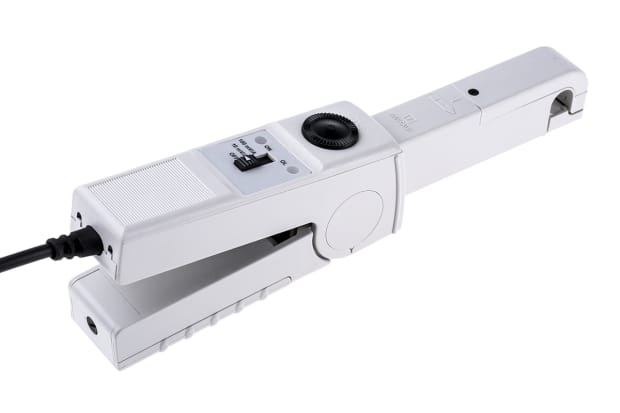
Clamp-On Ammeters
Current clamps are a different type of device for measuring electrical current, widely used by electricians. They feature a pair of insulated, plier-like jaws which close over the wire or conductor, allowing measurement without the need for disconnection. When combined with an ammeter, the resulting hybrid devices are known as clamp-on ammeters, clamp meters or just amp clamps.
Typically, they feature a short extension cord which allows the device to separately access the dual conductors within electrical cables. However, some recent models also feature multiple sensor coils within the jaws, allowing the ammeter to access and measure up to three conductors within a cable, with no need for separation.
When combined with a transformer, clamp meters can comfortably measure high currents, but they are less suited to low currents in the milliampere range. It’s also worth noting that some models may only provide approximate readings.
How to Use an Ammeter
Here are the four basic steps for using an ammeter correctly and safely:
- Choose the right model for your requirements. Do you prefer analogue or digital? Do you need high capacity or low capacity?
- Safety is key. Before you begin to use the ammeter, make sure that all the equipment in use has been checked thoroughly for any faults. You should also protect yourself from live electrical current with insulated gloves
- Apply the ammeter leads to the target area - the point at which you want to measure the current. Using a crocodile clip, attach the red lead to the wire nearest the positive terminal and the black lead to the wire nearest the negative terminal on the device you are measuring. Be careful not to confuse the two
- Check your reading. On analogue panel ammeters, look for the nearest marker to the needle
FAQs
Should an Ammeter Be Connected in Series or in Parallel?
‘In series’ is a term used in electrical engineering to mean an arrangement that ensures current passes through each component. ‘In parallel’, meanwhile, means connected at each end, so the current does not flow through each circuit.
Ammeters should be connected to an electrical circuit in series in order to properly measure the flow of current through the complete circuit. Connecting an ammeter is likely to cause a short circuit (an interruption in the current flow), resulting in damage.
What is the Difference Between AC Ammeters and DC Ammeters?
Electrical current is delivered in two forms - alternating and direct. Alternating current is so called because it regularly changes direction. This is the most widely used form of electricity - see almost all domestic and office appliances - because it is easy to transmit long distances and control using a transformer. Direct current is still used, however, in battery-powered devices, telecommunications and solar-powered equipment, along with the electrical components of vehicle engines.
AC and DC ammeters designed for modest currents (up to about 30 amps) are very similar, both making use of a precise resistor to detect current. Larger DC ammeters designed for higher currents still require a precision resistor, whereas larger AC devices make use of a transformer which produces a lower, proportional current in a separate circuit. This is then measured in order to gauge the full current.
Popular Brands
Sifam Tinsley
Analogue panel ammeters from Sifam Tinsley offer high quality and high levels of precision. Shop the full range now.
